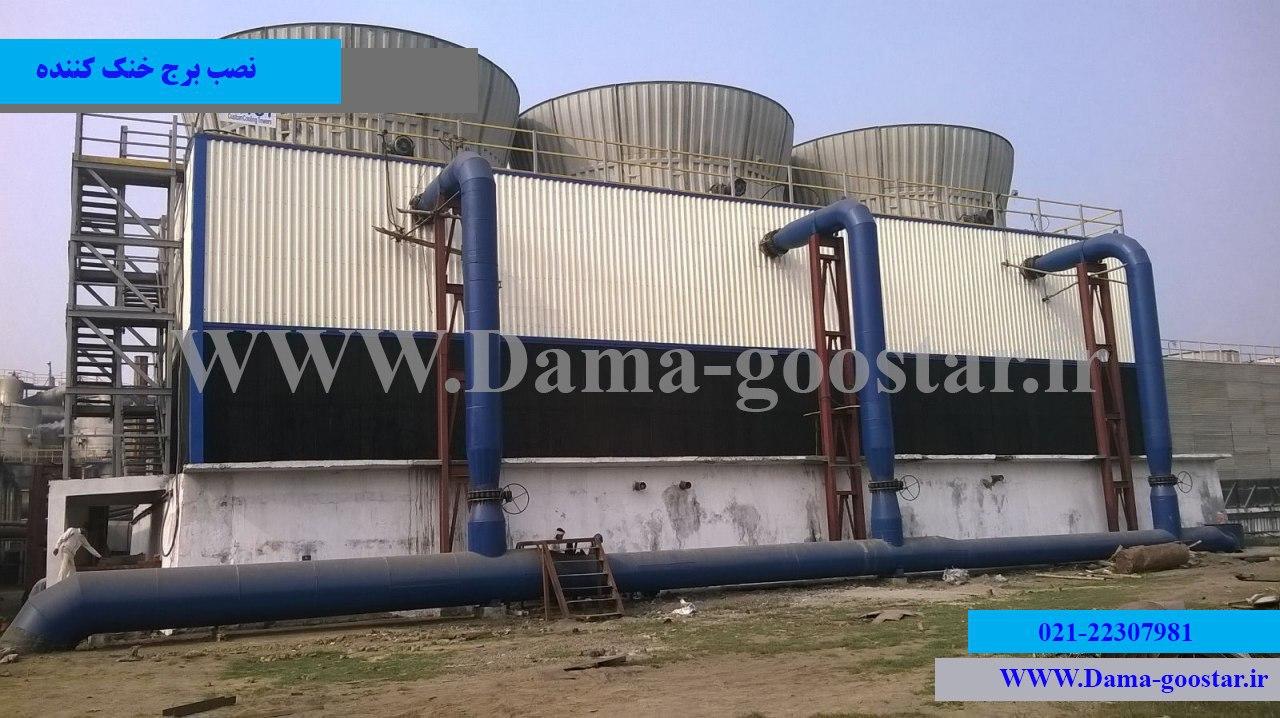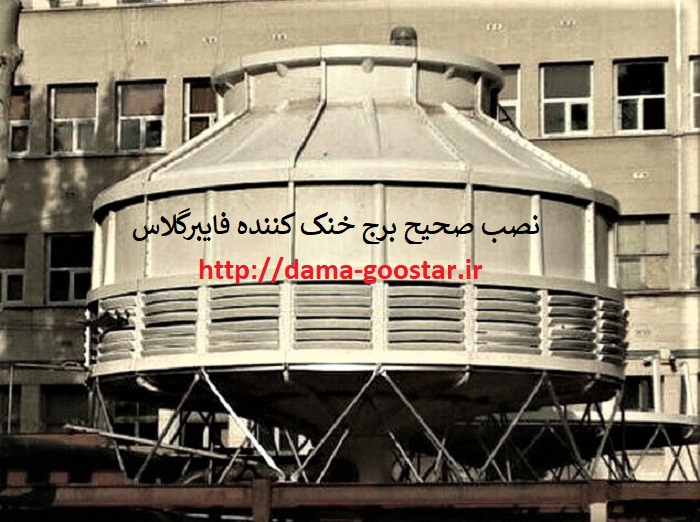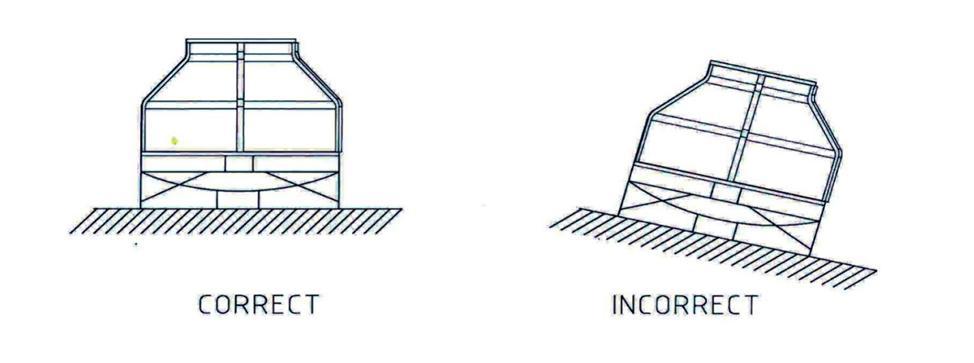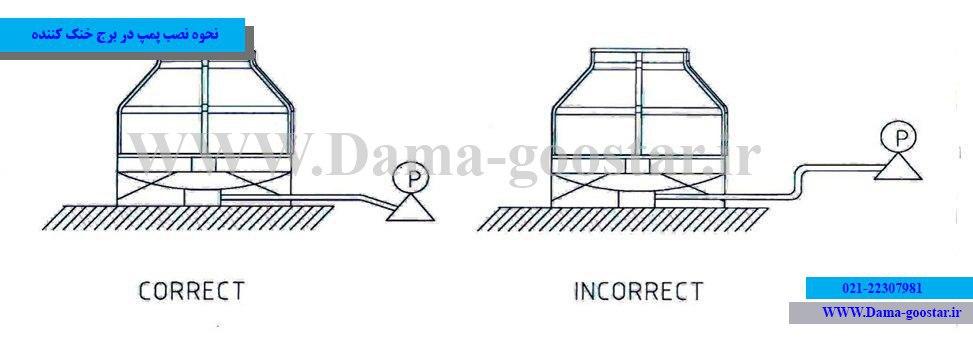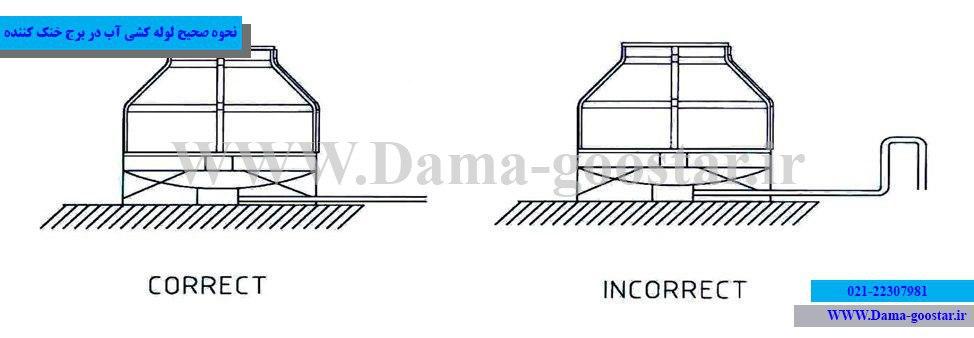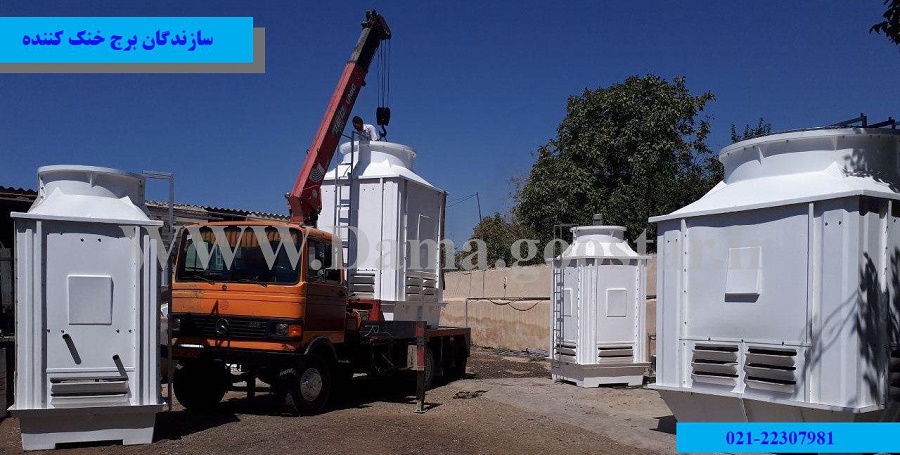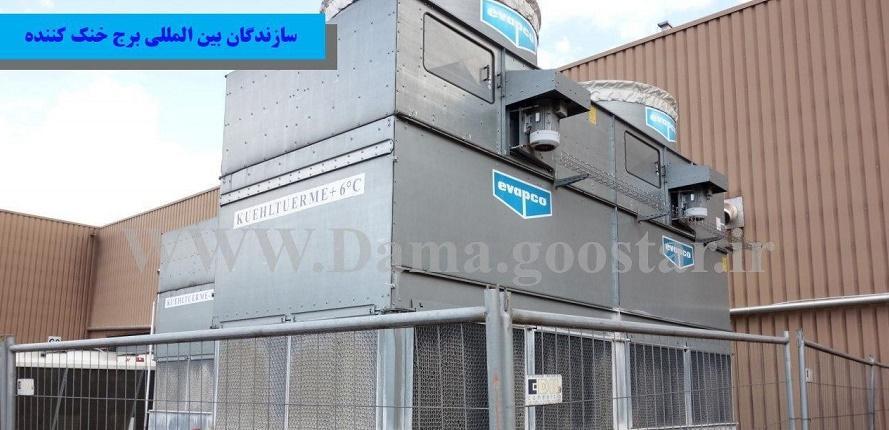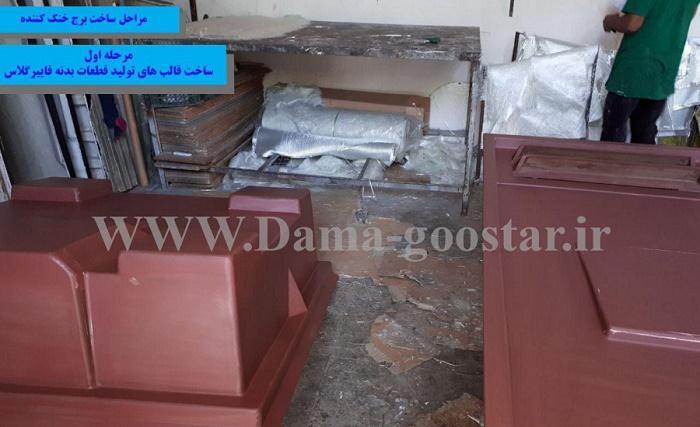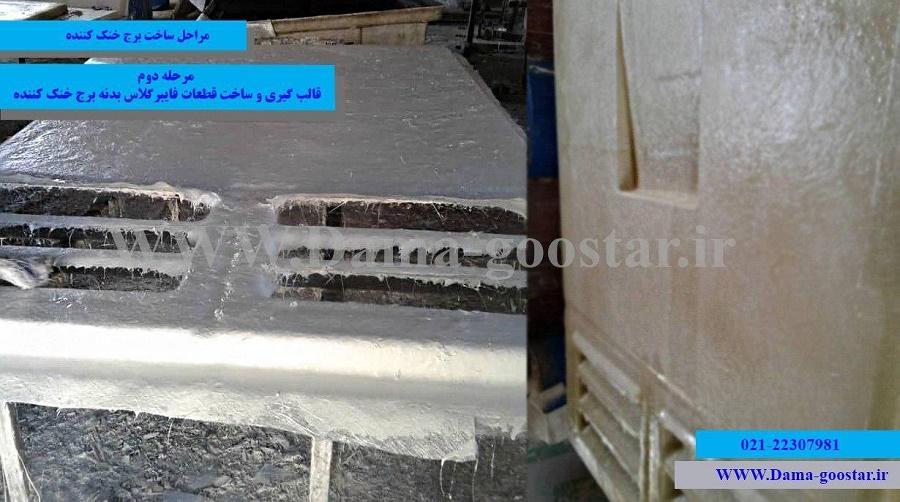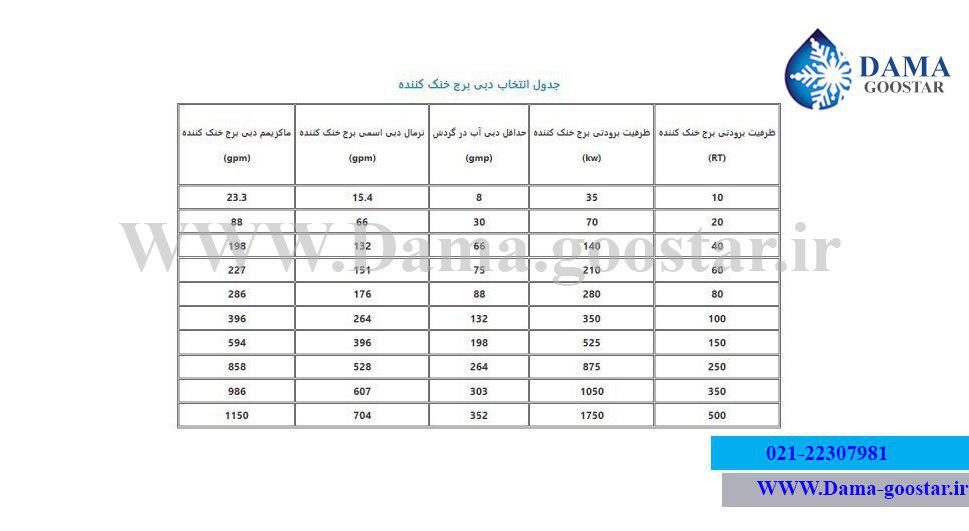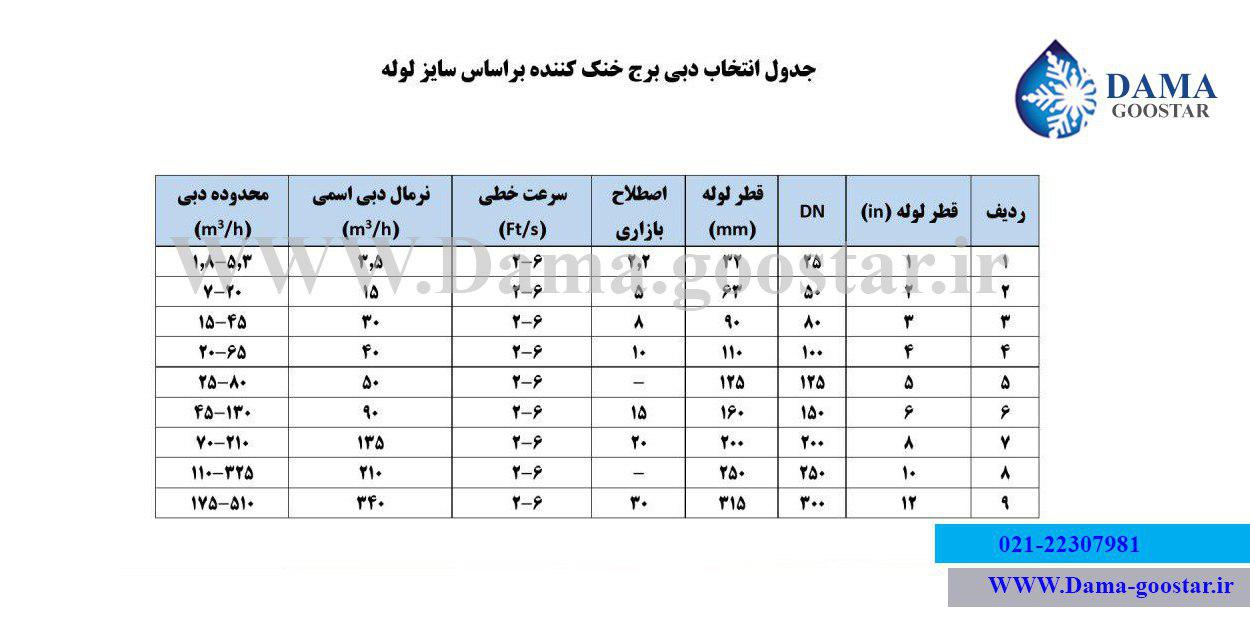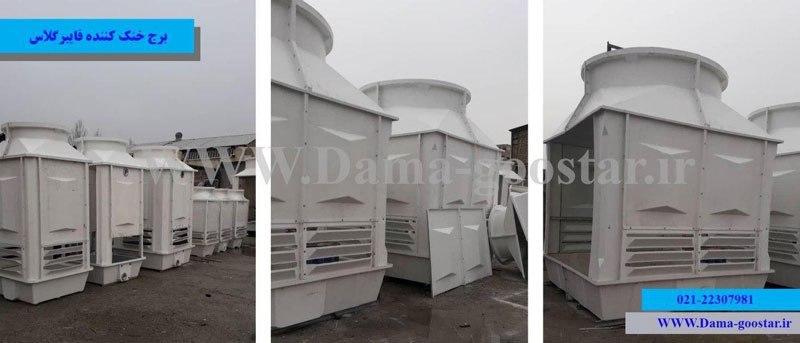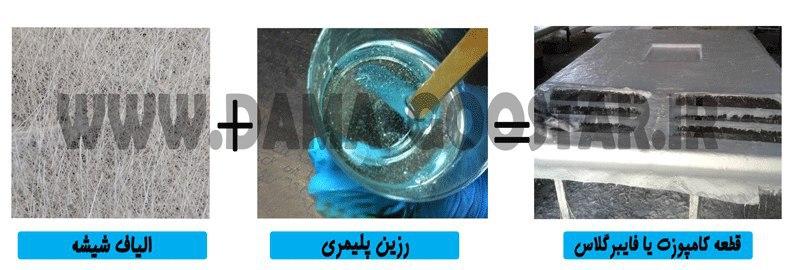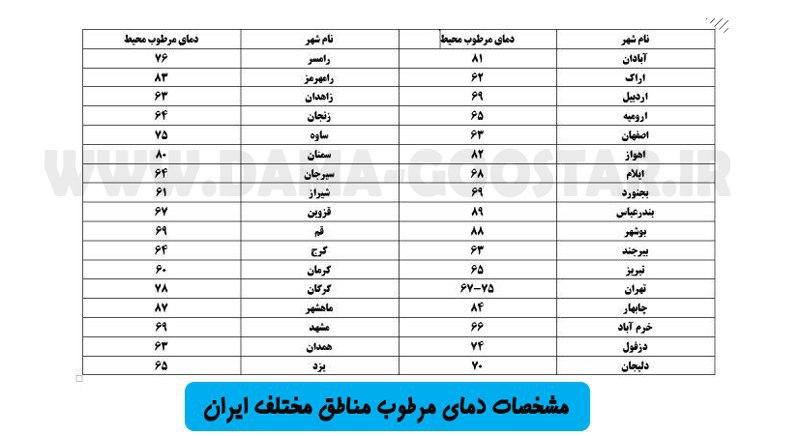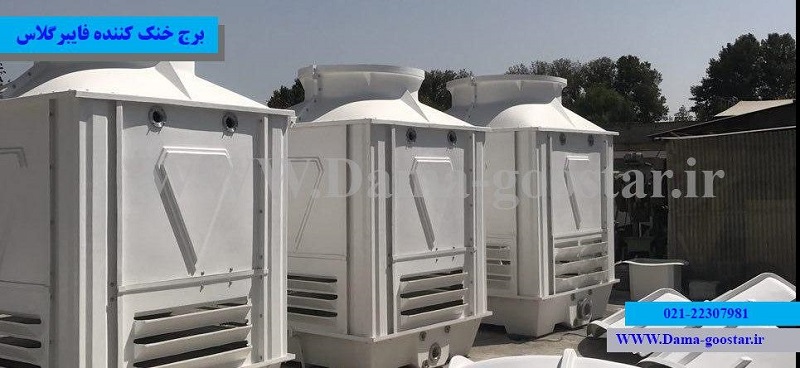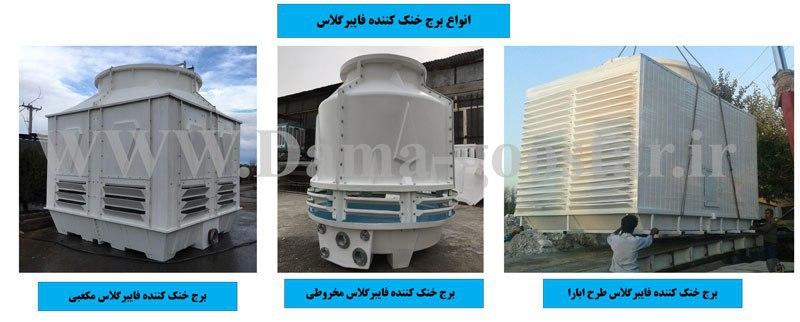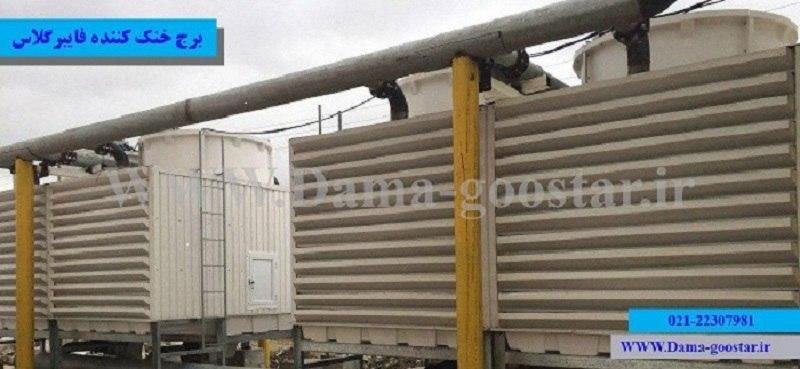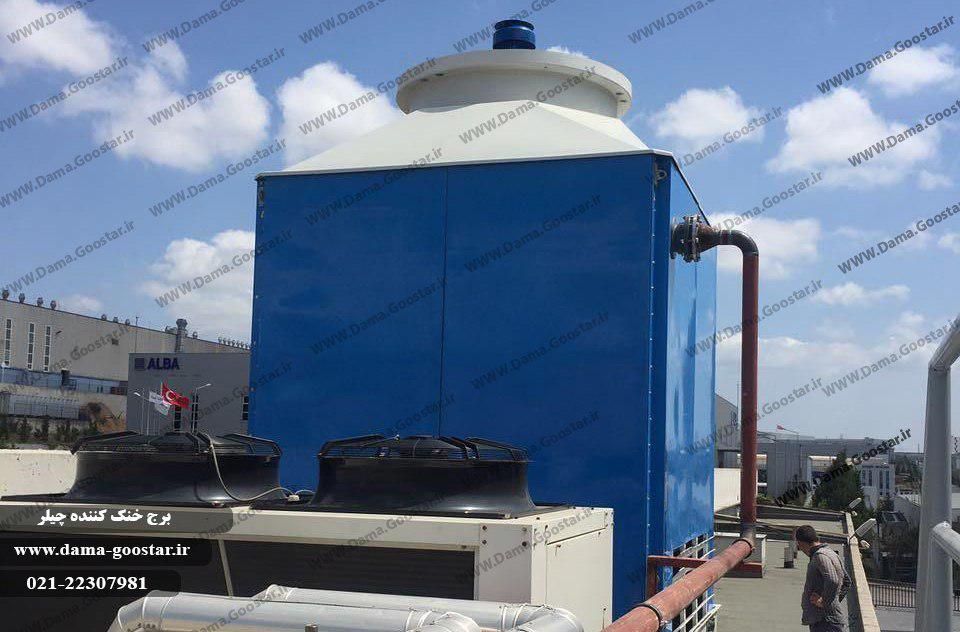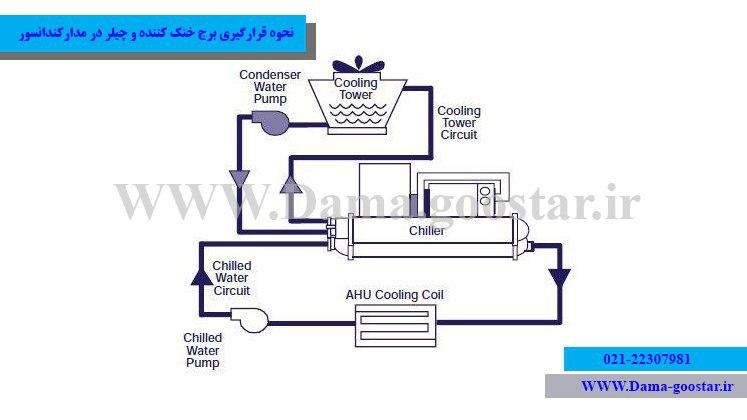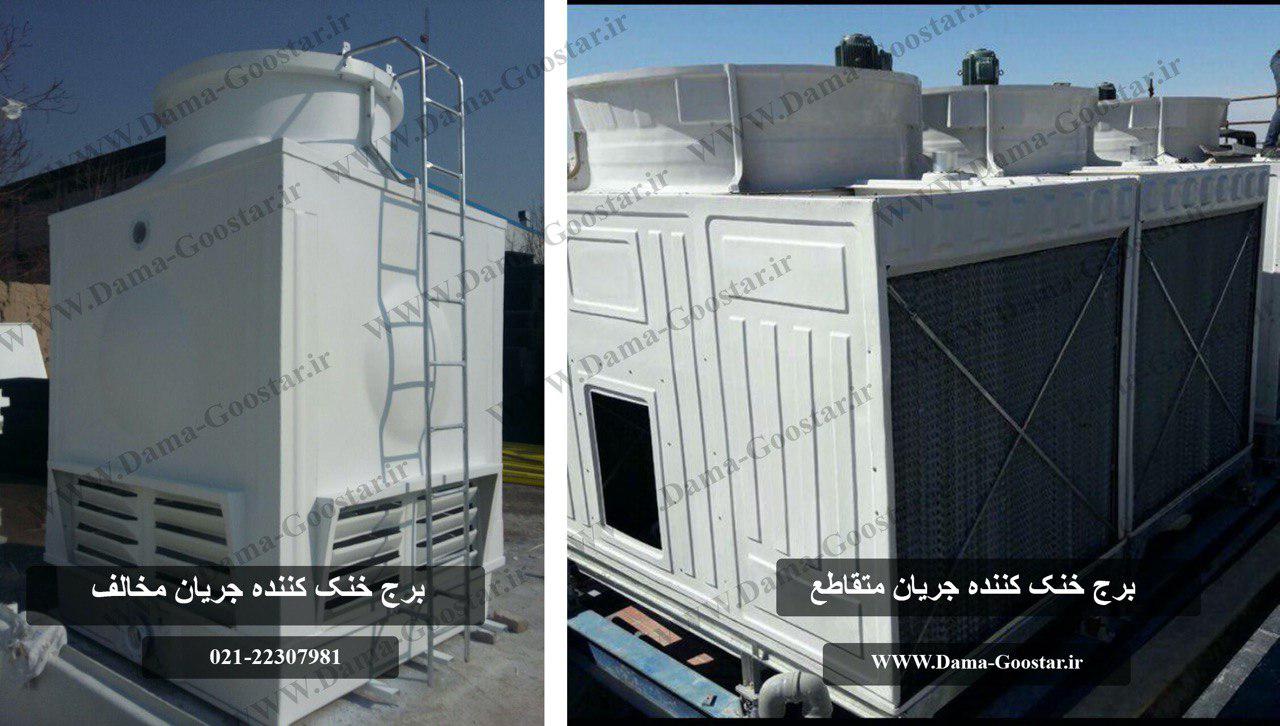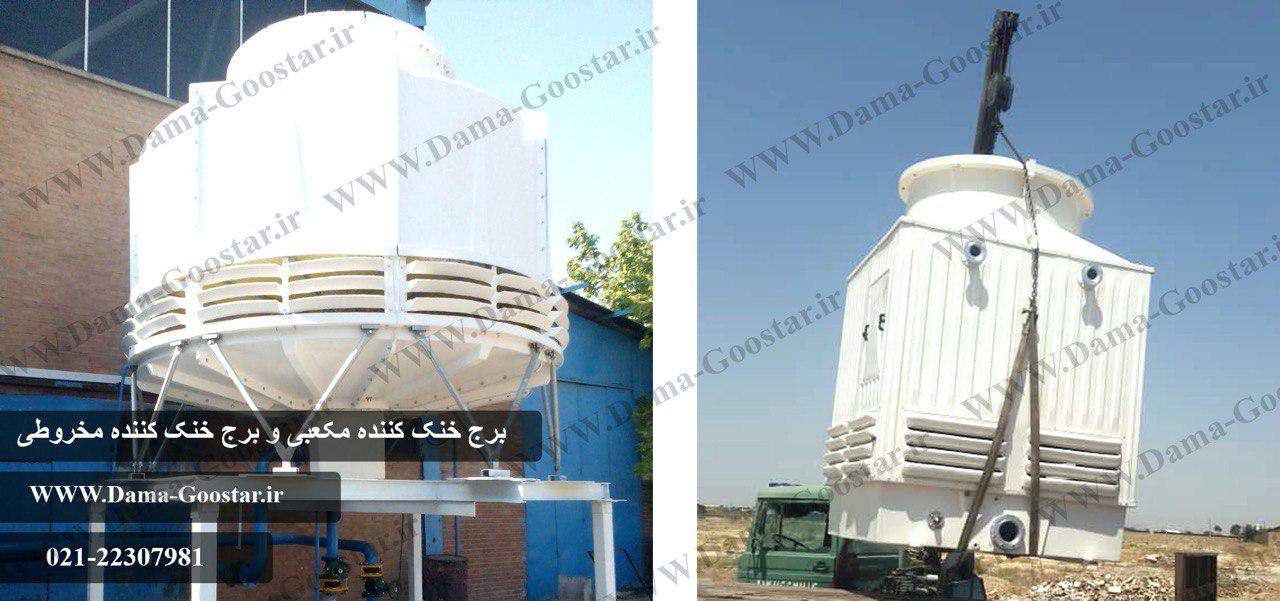Installation of cooling tower is a set of operations to use the cooling tower, which includes four parts: assembly, cabling, piping and foundation. The cooling tower installation operation usually deals with various parts of engineering facilities. The installation of a cooling tower or cooling tower must be done in several steps and in compliance with the relevant standard principles. Observing the installation principles will lead to the correct use of the cooling tower with the highest level of efficiency. The basic and important principles of installation of any equipment are provided by the manufacturer. Many authorities have developed relevant standards for engineers in different communities regarding installation requirements. ASHRAE-ASME-CTI-DNI standards are one of the most important standards references related to cooling tower installation. Companies specializing in the installation of cooling towers And other refrigeration equipment must operate with the efficiency of fluid engineering, electrical, civil and mechanical knowledge.
Benefits of installing a cooling tower correctly
The effect of a successful installation in the cooling system of industrial equipment or chiller can cause the optimal operation of the system for many years. In fact, observing the standard principles in the use and commissioning of any industrial or refrigeration equipment will lead to better operation of the equipment. Failure to observe the principles of engineering in the starter and using the cooling tower can reduce the useful life, reduce efficiency and increase energy consumption of this device. In many cases, the buyer installs this equipment after the purchase and selection process of the cooling tower, regardless of the basic conditions. In most cases, this will cause irreparable damage to the water cooling system in the near future. In fact, the lack of technical knowledge in the installation can disrupt the overall performance of the system. In this article, we will briefly mention the basic principles of installing a cooling tower .
The most important principles in the operation of installing a cooling tower
A) Determining the best location for the cooling tower (cooling tower location)
B) Observing the principles related to the arrangement and correct placement of the cooling tower with ancillary equipment
C) Installation of necessary control and protection equipment in the control panel of the electric motor, fan and circulator pump
D) Proper implementation of plumbing in accordance with ASME and DNI standards
E) Installation and accessories in the piping circuit including flanges, collectors, shock absorbers and support of side valve pipes
Determining the location and installation of the cooling tower
The location of the cooling tower must have two basic conditions. The first condition for the location of this device is to have enough free space around the tower to create a proper air flow. The second condition is to observe the distance between the cooling tower and other obstacles in order to prevent bypassing the outlet air to the inlet. The best place to install any chiller cooling tower is on the roof of the building, which provides two very important conditions for the tower to function properly. The roof of the building is the best option for the operation of the cooling tower due to its height from the engine room and having free space. In industrial use , fiberglass cooling tower is also the best place to install this device on the roof of the shed or the roof of the baby shed. The most important point in determining the location of the cooling tower is that this equipment is located in the open air.
In addition to the location, observing the distance between the installation location of the cooling tower and other equipment and buildings is also of great importance. Towers should have a sufficient free distance from walls and other surrounding obstacles. Observing the distance of the cooling tower in the vicinity of other obstacles prevents the recirculated air from returning to the inlet air section. If there are several cooling tower devices, the distance and proximity of the devices should be designed to prevent the evacuation air of a tower from entering the adjacent tower. Certainly the roof of a building that does not have any obstacles can not lead to recycling as long as it does not even have an aesthetic protection. The following figure shows the location of the condenser pump and piping. The location and installation of the tower should be such as to prevent the recirculation of the tower air flow.
Standard intervals of cooling tower installation location
Building walls, lattice or column walls, trees, etc. can create obstacles to proper air circulation if the tower is close to them. The provided distances to the installation location of the cooling tower from other obstacles and equipment are usually as suggested. It is sometimes very difficult to ensure that all distances are observed in determining the location of the cooling tower. Therefore, it is recommended that you consider the specified and suggested distances as much as possible in determining the installation location. All the items mentioned in the standard intervals of the cooling tower installation location can be seen in the image below.
Suggested distance from cooling tower to high walls = half wall height
Suggested distance from the cooling tower installation site to the trees or lattice wall = width of the cooling tower
Cooling tower height considering foundation height = height of nearby obstacles such as lattice wall
The cooling tower must be at least 30 feet (9 meters) from the adjacent building walls. The taller the building, the more obstacles there are. Therefore, the retreat of the tower should be increased to at least half the height of the building to prevent the circulation or re-entry of the evacuated air stream. Cooling towers are not very beautiful, so architects use lattice walls (wooden, masonry) around the tower. In addition to separating the cooling tower from the roof environment, the lattice wall prevents water droplets from entering the environment.
Popular content: Louvre or cooling tower inlet
Design of guard structure around the cooling tower installation site
The lattice walls must provide at least 50% free space at the entrance to the Louvre cooling tower.
The allowable velocity of air passing through the retaining walls or protective wall must be less than 600 feet per minute.
The height of the lattice wall or obstacles near the cooling tower should not be higher than the final height of the fan stack or saturated air outlet.
Execution of the foundation of the cooling tower installation site
The foundation of the location and installation of the cooling tower must be designed in accordance with the standard installation conditions. The most important basic principles in the design of the foundation of the cooling tower installation site are as follows:
The foundation of the installation site must be completely level and horizontal.
The foundation of the device can be an all-iron structure or an all-concrete level surface with an iron chassis.
The main loads of the structure must be restrained by four plates into the reinforced concrete.
The distance between the plates installed in the metal or concrete structure must be designed according to the drawing of the production device.
In order to control the vibration of the device, it is recommended to use mechanical shock absorbers (spring or plastic) in different places.
If you are constructing a metal structure for the foundation of the location, be sure to use the necessary braces to distribute the weight of the cooling tower.
The minimum height of the metal or concrete structure of the foundation where the cooling tower is located should be designed 50 cm above the ground.
Principles of cooling tower piping operations
Placement of cold water circulator pump after pan or cold water storage tank with a short distance
The position of the circulator pump should always be below the level of the pan outlet flange (this will prevent cavitation or corrosion of the pump fan blades).
Install the one-way valve at the suction or suction point of the pump
Install the circulating water flow regulating valve after the discharge point or pump blow
Use all-flange fittings instead of welded plumbing
Application of seismic connections in flange points of piping in order to damp the shocks caused by water circulation by the pump
Use of elastomeric insulation or fiberglass insulation suitable to prevent the pipes from freezing in winter
Use of maintenance supports to adjust water transmission lines in the condenser cycle
Design of circulator pump with suitable head for rotating standard water level
Cooling tower outlet piping should be directed downwards to the circulator pump
The size of the piping should be designed according to the outlet flange of the cooling tower pan
If two cooling tower devices are installed simultaneously with one pump, both devices must be in the same level.
Standard water inlet to the cooling tower
The water entering the cooling tower or cooling tower must always be of the required quality. In open or wet tower systems where water is constantly evaporating, care must be taken that the injected compensatory water must be hardened. The amount of solutes present in the compensatory water (TDS) should always be considered less than 300 ppm. The higher the amount of compensatory water entering the cooling tower, the less sediment and clogging will be. In fact, the service life of sediment in clean water is much longer than when the incoming water is of lower quality. Increasing the quality of incoming water can be done in many ways. Ion exchange methods, reverse osmosis and micron and sand filtration are the most common compensatory water treatment systems.
Reverse osmosis method uses large and small water purifiers to supply soft water into the cooling tower. Of course, it should be noted that this method is often not common in most industries and air conditioning systems due to high maintenance costs. The main alternative to desalination is the use of resin and magnetic hardeners. Permissible hardness of water in the cooling tower circulation should not be considered more than 350ppm. As you know, the total hardness of TH is the sum of two metal cations, calcium and magnesium. In the ion exchange method by targeting these two heavy metal cations and replacing them with light sodium ions; Water becomes very soft and quality. Of course, the standard amount of water entering the industrial cooling tower varies according to the type of use of the device.
